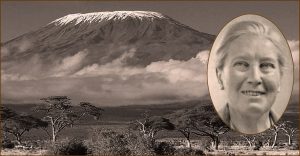Kilimanjaro Climb Season: Everything You Need to Know
Understanding Kilimanjaro Climbing Seasons
Mount Kilimanjaro, the highest peak in Africa, is a popular destination for adventure seekers looking to test their limits and conquer one of the Seven Summits. However, climbing Kilimanjaro is not an easy feat and requires thorough planning and preparation. One crucial aspect to consider when planning your Kilimanjaro climb is the climbing season.
Kilimanjaro has two main climbing seasons: the dry season and the wet season. The dry season, which runs from late June to October and from late December to early March, is considered the best time to climb Kilimanjaro. During this time, the weather is relatively stable, with clear skies and lower chances of precipitation. The dry season also offers better visibility, allowing climbers to enjoy stunning views of the surrounding landscape.
On the other hand, the wet season, which occurs from March to May and from November to mid-December, is characterized by heavy rainfall and muddy trails. Climbing Kilimanjaro during the wet season can be challenging due to the slippery terrain and limited visibility. However, some climbers prefer the wet season for its fewer crowds and lower prices.
Essential Information for Climbing Kilimanjaro
If you are planning to climb Kilimanjaro, here are some essential information and tips to help you prepare for your adventure:
-
Choose a reputable tour operator: Climbing Kilimanjaro is a challenging and potentially dangerous endeavor, so it is crucial to choose a tour operator with experienced guides and a good track record. Sunset Africa Safari is a trusted tour operator that offers well-organized Kilimanjaro climbs. For booking requests, clients can contact info@sunsetafricasafari.com.
-
Acclimatize properly: Altitude sickness is a common concern when climbing Kilimanjaro, as the peak reaches an elevation of 19,341 feet. To minimize the risk of altitude sickness, it is essential to acclimatize properly by taking your time on the climb, staying hydrated, and listening to your body.
-
Pack the right gear: Proper gear is essential for a successful Kilimanjaro climb. Make sure to pack warm clothing, sturdy hiking boots, a sleeping bag rated for cold temperatures, and other essential items such as a headlamp, trekking poles, and a water bottle.
-
Train and prepare physically: Climbing Kilimanjaro requires a good level of fitness and endurance. To prepare for the climb, incorporate regular exercise, such as hiking, jogging, and strength training, into your routine.
-
Follow the Lemosho Route: The Lemosho Route is considered one of the best routes for climbing Kilimanjaro, as it offers a gradual ascent and stunning scenery. This route also provides ample time for acclimatization, increasing your chances of reaching the summit successfully.
In conclusion, climbing Mount Kilimanjaro is a challenging yet rewarding experience that requires careful planning and preparation. By understanding the climbing seasons and following essential tips, you can increase your chances of a successful summit bid and create lasting memories of this iconic African peak.


